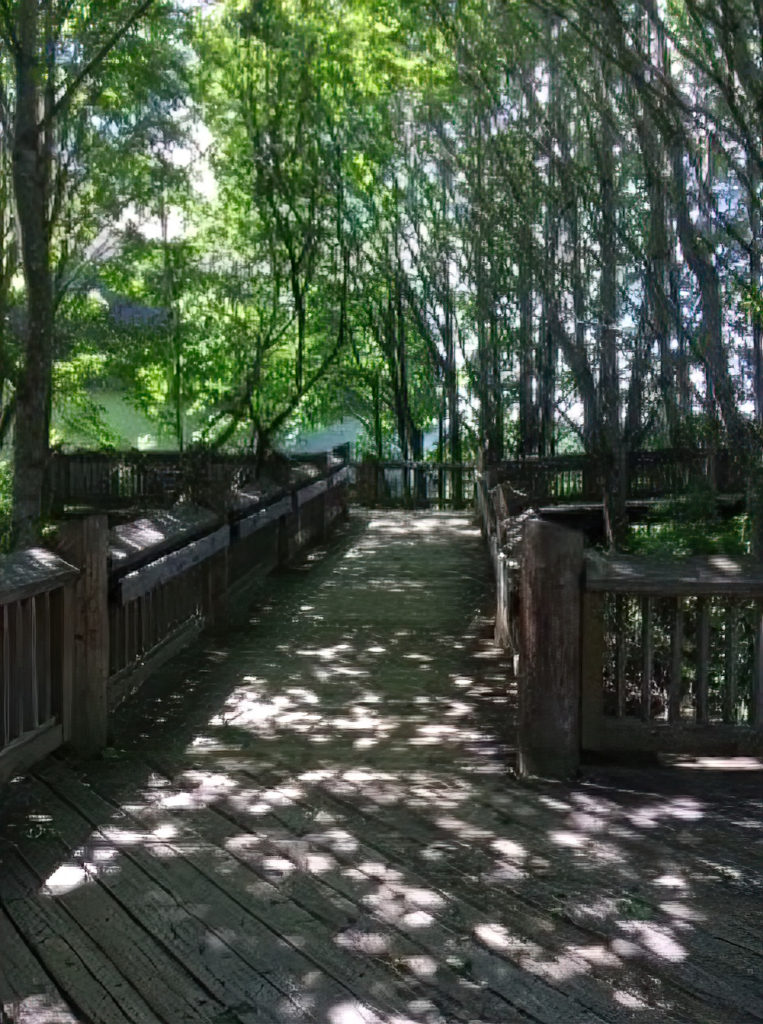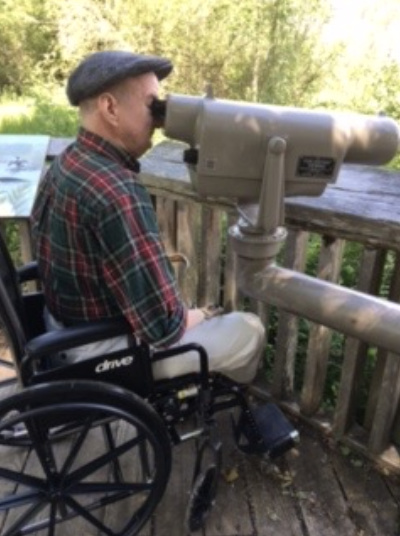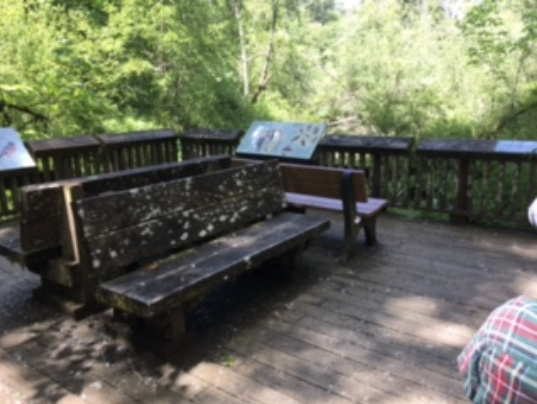By Diane and Tom Hundley
Please see the description of the wildlife refuge and its bird habitat here: blackhills-audubon.org/local-birdy-places This article will deal with access considerations on the Refuge.
The Refuge is open year-round, from sunrise to sunset. The Visitor Center is open from 9:00 a.m. to 4:00 p.m. Wednesday through Sunday except on major holidays. It is staffed by volunteers and has loaner binoculars, field guides, and passes for sale as well as a bookstore and gift shop. The refuge has a $3.00 parking fee unless you have a federal pass. No pets are allowed on the refuge. There are four accessible parking spaces with no curbs or other barriers to the trails and visitor center. There are accessible public restrooms in the Visitor Center complex and port-a-potties (one of which is accessible) at the twin barns which are 1/2 mile from the visitor center. It should be noted that during hunting season, rifle shots can be heard in the refuge and that firing from Joint Base Lewis McChord (which is nearby) may be heard year-round. The refuge has staff on-site during the work week. There are interpretive programs offered; check the website for details. www.fws.gov/refuge/billy-frank-jr-nisqually The Refuge is popular with the local communities and, on weekends, the parking lot can fill up by 10 am.
The recommended Twin Barns Loop Trail is one mile and is comprised of wooden boardwalks. It is deemed wheelchair accessible and is well-maintained with a few benches scattered around the loop. It meets wheelchair-accessible requirements but may be difficult to traverse for some. There are two ramps with gentle slopes – one to the Visitor Center and one up to a viewing platform at the twin barns. Various information signs on the boardwalk cover common birds found there, as well as some of the history of the refuge. The drinking fountain and the soap dispensers in the bathrooms were a little high so be aware. If you visit at a busy time, there will be strollers and family groups on the boardwalk. It is manageable and there are regular, wider viewing areas to help people pass. Also, there have been car break-ins in the parking lot so do not leave valuables in your car.
The refuge is a lovely, very “birdy” place to visit. It has beautiful tree-shaded trails and feels safe and well-maintained. Bikes, jogging, camping, and drones are not allowed. It is a true gem for the Puget Sound area.
Photos by Anne Hundley










